
economics, political economy, Holy Roman history, mathematical ecology, other things that interest me
bsky.app/profile/jose...
Economists are not famous for their discussions of culture and religion. However, increasingly they have come to recognize that culture might play a role in influencing long-term economic growth.
China might provide an interesting case study.
1/

bsky.app/profile/jose...
Classicism and Modern Growth: The Shadow of the Sages:
www.cambridge.org/core/journal...
10/10
Classicism and Modern Growth: The Shadow of the Sages:
www.cambridge.org/core/journal...
10/10
1) Culture matters economically
2) In Qing China, higher densities of sage temples were associated with lower rates of firm foundations in the 19th and 20th centuries
3) This holds when using sage birthplaces instead
4) This might be persistently impactful on cultural dynamism
9/
1) Culture matters economically
2) In Qing China, higher densities of sage temples were associated with lower rates of firm foundations in the 19th and 20th centuries
3) This holds when using sage birthplaces instead
4) This might be persistently impactful on cultural dynamism
9/
Some of his controls are also questionable.
8/
Some of his controls are also questionable.
8/
He finds that sage temples and birthplaces are also associated with low rates of journal publications and intellectual activity in modern history, perhaps showing cultural backwardness.
7/
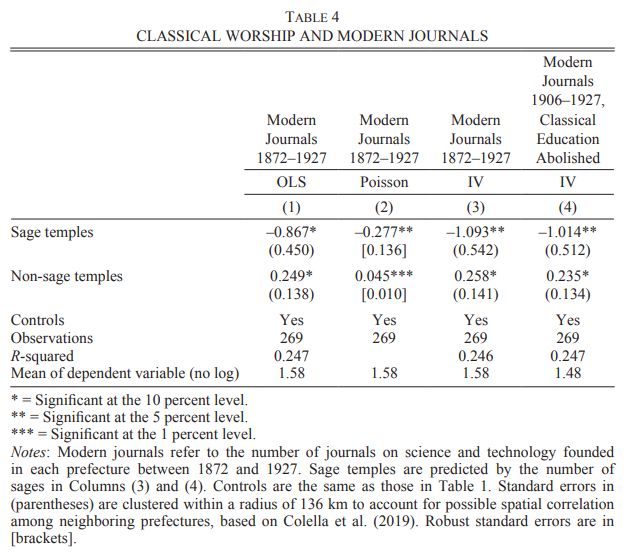
He finds that sage temples and birthplaces are also associated with low rates of journal publications and intellectual activity in modern history, perhaps showing cultural backwardness.
7/
As such, Ma looked at the link between firm foundations and the birthplaces of the sages, centuries or millennia earlier. That should be unrelated with characteristics of the area later when the shrines were built. The association holds.
6/
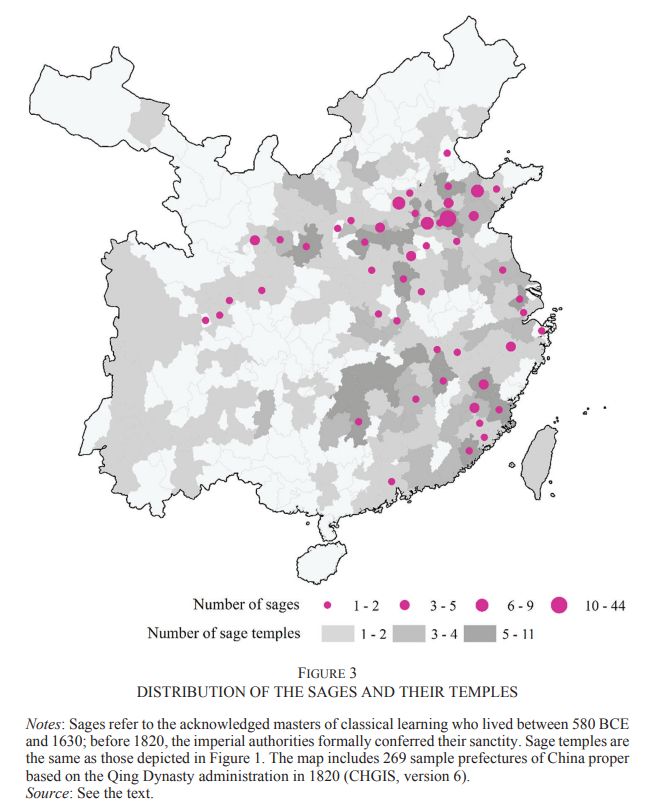

As such, Ma looked at the link between firm foundations and the birthplaces of the sages, centuries or millennia earlier. That should be unrelated with characteristics of the area later when the shrines were built. The association holds.
6/
This might show that areas which worshipped ancient wisdom were less likely to take up on modern economic ideas.
5/

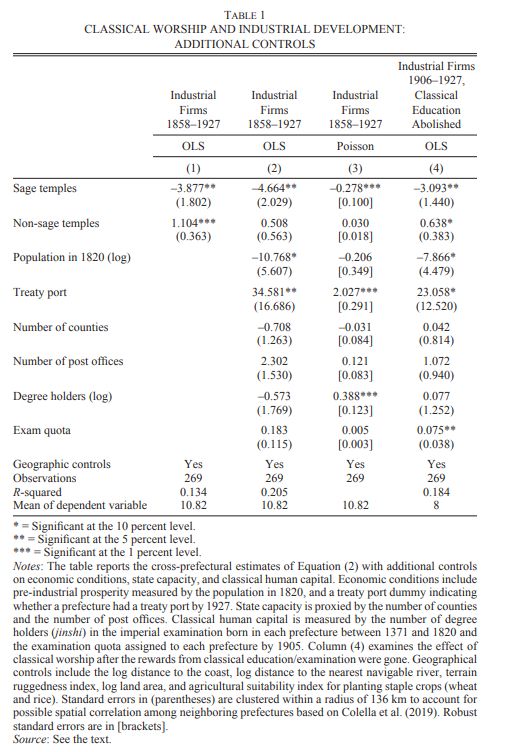
This might show that areas which worshipped ancient wisdom were less likely to take up on modern economic ideas.
5/
4/
4/
He suggested that we might be able to use temples to the "sages", the founts of ancient knowledge, as proxies for more traditional forms of culture in Qing Chinese history.
3/
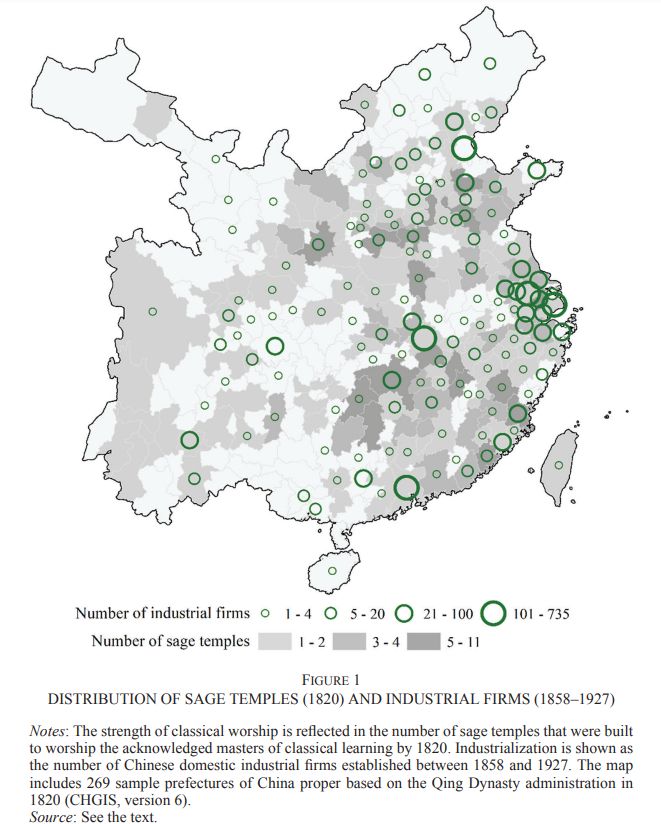
He suggested that we might be able to use temples to the "sages", the founts of ancient knowledge, as proxies for more traditional forms of culture in Qing Chinese history.
3/
It might help explain some puzzling discrepancies in growth rates between areas that are similar in all other observable respects.
It's also important for how economists theorize growth and change generally.
2/
It might help explain some puzzling discrepancies in growth rates between areas that are similar in all other observable respects.
It's also important for how economists theorize growth and change generally.
2/
bsky.app/profile/jose...
Gender often defines or colours our social networks and interactions. We might be more or less likely to make friends with someone because of their gender.
How does this look on the global scale, and how do we measure it?
1/

bsky.app/profile/jose...
Cross-Gender Social Ties Around the World:
www.nber.org/papers/w33480
9/9
Cross-Gender Social Ties Around the World:
www.nber.org/papers/w33480
9/9
1) Facebook friending data can be used to construct the Cross-Gender Friending Ratio
2) The CGFR varies across regions of the world
3) It correlates strongly with feminist attitudes and female labour force participation
4) In the US, it is somewhat demographically polarized
8/
1) Facebook friending data can be used to construct the Cross-Gender Friending Ratio
2) The CGFR varies across regions of the world
3) It correlates strongly with feminist attitudes and female labour force participation
4) In the US, it is somewhat demographically polarized
8/
It's worth saying there may be selection biases: in very poor areas, only wealthier or better-educated people may have Facebook access.
7/
It's worth saying there may be selection biases: in very poor areas, only wealthier or better-educated people may have Facebook access.
7/
For example, it comes out that white people and rich people tend to have lower Cross-Gender Friending Ratios than poor, black, or Hispanic people. Religion's role is a bit more ambiguous.
6/
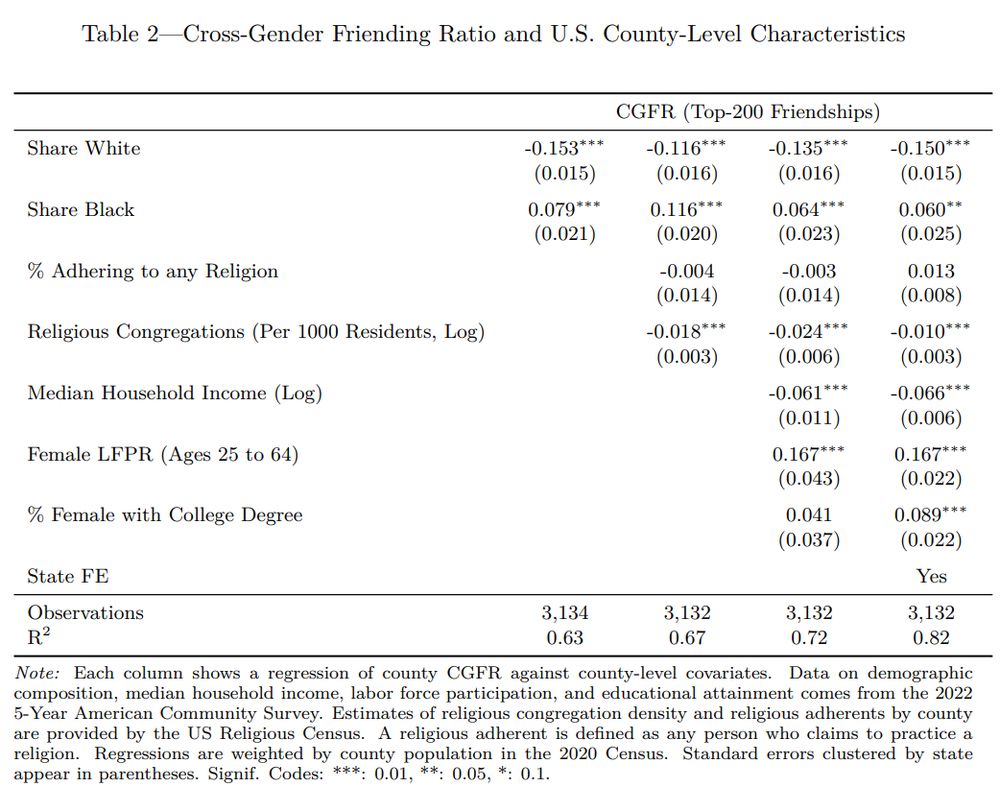
For example, it comes out that white people and rich people tend to have lower Cross-Gender Friending Ratios than poor, black, or Hispanic people. Religion's role is a bit more ambiguous.
6/
For instance, having a higher Cross-Gender Friending Ratio usually means a country is more accepting of basic feminist ideas, and is likely to have higher female labour force participation.
5/

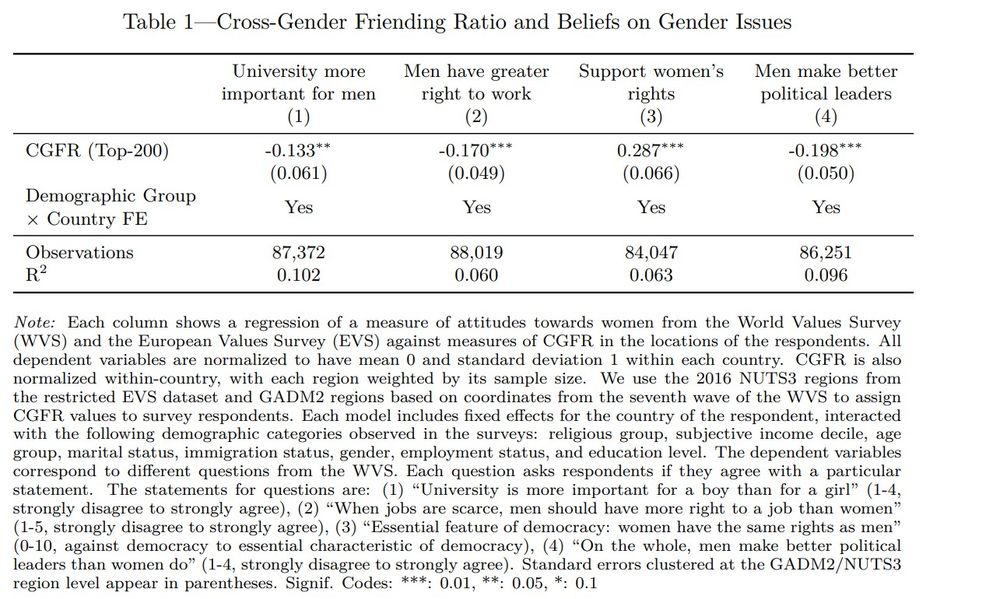
For instance, having a higher Cross-Gender Friending Ratio usually means a country is more accepting of basic feminist ideas, and is likely to have higher female labour force participation.
5/
Rates are lowest in traditionally Muslim areas like the Middle East and north Africa, and highest in Latin America and parts of Sub-Saharan Africa. Interestingly, Europe and the US are somewhere in the middle - perhaps surprisingly!
4/

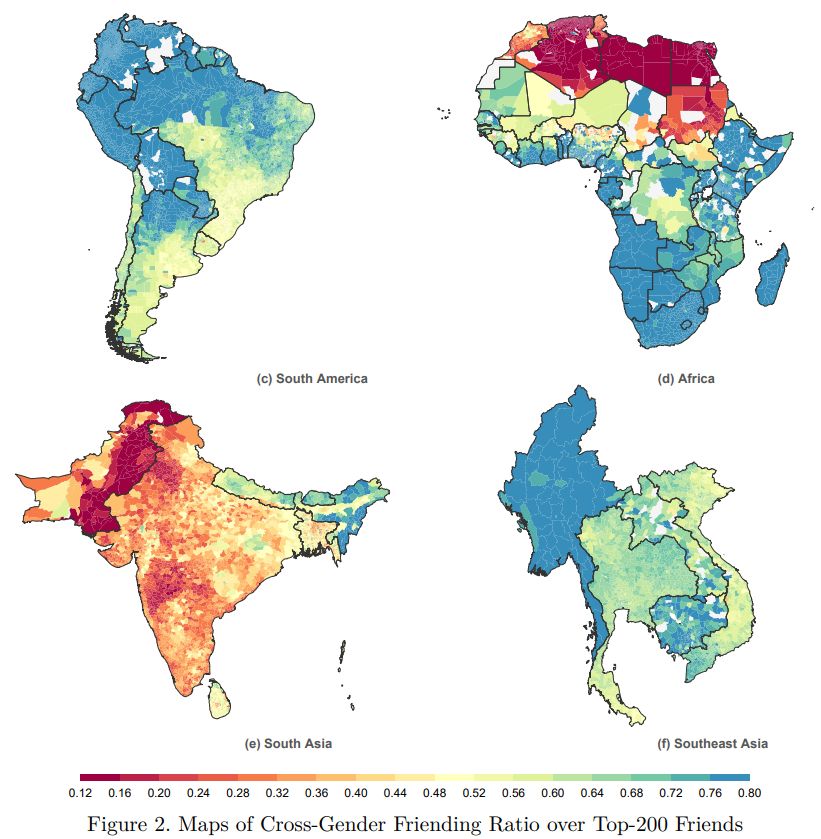
Rates are lowest in traditionally Muslim areas like the Middle East and north Africa, and highest in Latin America and parts of Sub-Saharan Africa. Interestingly, Europe and the US are somewhere in the middle - perhaps surprisingly!
4/

